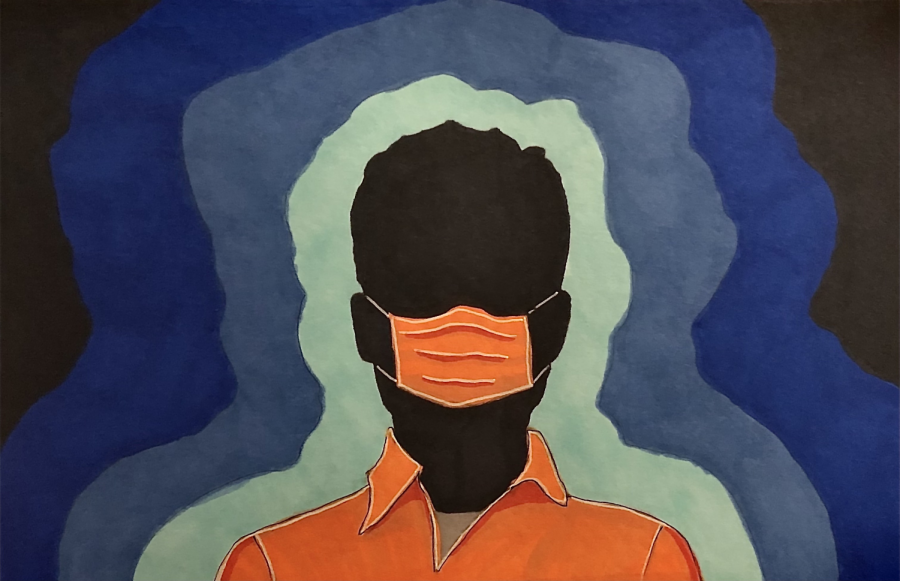First death at Washington State Penitentiary in Walla Walla as COVID-19 cases surge
November 25, 2020
COVID-19 cases have spiked at the Washington State Penitentiary in Walla Walla in the past two weeks. The penitentiary has 117 active cases among the incarcerated population as of Tuesday, Nov. 24, according to the Walla Walla County COVID-19 website.
One incarcerated individual died of COVID-19 on Saturday, Nov. 21, the first death at the Washington State Penitentiary and the third state-wide.
Current COVID-19 cases at the penitentiary represent 17 percent of the 688 active cases in Walla Walla County.
Cases of employees at the penitentiary have increased as well. WADOC reports 40 cases as of Tuesday, Nov. 24.
Washington State Department of Corrections (WADOC) reported 273 total cases since March among incarcerated people at the Washington State Penitentiary as of Tuesday, Nov. 24, the second highest of any WADOC facility and over one-third of all cases at WADOC facilities.
Like other businesses and organizations across the state and country, WADOC facilities have adapted their policies as the medical community learns more about how the coronavirus spreads.
After 500 incarcerated people and corrections staff in Washington prisons tested positive for COVID-19 through the spring and early summer, an independent office that oversees the state’s prisons published a list of recommendations in early August.

The Office of Corrections Ombuds report recommended a host of measures to improve physical distancing, screening, testing and prevention, and suggested the WADOC expand mental health resources and visitation services with the incarcerated population. The WADOC’s Sept. 1 response statement pushed back on a number of recommendations in the Ombuds report.
The Ombuds recommended that the WADOC provide a report to the Governor and Legislature that assesses each facility’s current population compared to the maximum number of residents that permits adequate physical distancing. Once the report is received, the Governor and Legislature would consider additional releases of incarcerated peoples to meet the standards required by physical distancing.
This came more than four months after WADOC announced that more than 1,100 incarcerated people would be released to mitigate COVID-19 transmission concerns.
The WADOC responded that the Legislature, not the Ombuds, has the authority to request such a report, and the state government has not appropriated the required resources to determine the feasibility of additional releases to reduce the prison population.
The Ombuds also recommended daily mass screenings — temperature checks and verbal symptom-screening questions — for the entire incarcerated population, plus increased staff testing when the outer community is experiencing rising COVID-19 cases. The WADOC responded that daily screenings would “add an unnecessarily increased contact risk for all individuals and is not medically supported.”
Currently, incarcerated people are screened for COVID-19 with questions and a temperature check when coming into Health Services for scheduled or unscheduled care. Patients who arrive from a facility other than a WADOC facility are also screened. Incarcerated people who present with symptoms are isolated and Health Services is contacted.
Once assessed by a health practitioner, incarcerated people who present with COVID-19 symptoms or a fever are then placed in isolation and tested for COVID-19 and other respiratory viruses.
605 incarcerated men are currently in quarantine at the Washington State Penitentiary as of Saturday, Nov. 21, according to WADOC spokeswoman Rachel Noll.
Incarcerated people in medical isolation are seen by mental health staff twice daily, and the WADOC ensures that they have access to their belongings, art supplies and televisions in their isolated quarters.
As COVID-19 cases surge across the state, facilities have adopted “serial testing and screening” to prevent employees from bringing the virus into correctional facility grounds, according to WADOC Communications Director Susan Biller.
Serial testing, unlike testing many people all at once, is the practice of repeat-testing people at different points in time. Strategies involving serial testing are more likely to identify infected workers in high concentration workspaces than testing at one point in time, according to the CDC.
Any staff that registers a fever greater than 100.4 or experiences a cough within the past 14 days will not be allowed to enter the prison facility and will be referred to a medical professional to obtain a COVID-19 test. Employees who test positive are asked to self-quarantine at home for 14 days, and employees believed to have had close contact with that member will be asked to self-quarantine as well.
When an employee tests positive, an on-site medical team or medical care provider leads the DOH-approved contact tracing procedures that rely on interviews with the individual who tested positive. Any employee believed to have come in contact with that individual is likewise asked to self-isolate for 14 days.
In line with the Ombuds’ recommendations, the WADOC expanded free communication services after terminating visitation in the spring. Incarcerated people are allowed two free phone calls and two free video calls per week, in addition to two free stamps for physical mail per week.
On Friday, Nov. 20, WADOC announced that they would be postponing any changes to their Safe-Start Visitation Plan. When the pandemic began in March, WADOC announced a temporary suspension of the in-person visitation program. Nearly two months after the Ombuds’ suggestion to explore limited, non-contact in-person visitation, the WADOC revealed their Safe Start visitation plan on Oct. 1. The plan features four phases ranging from video-only visits to the resumption of pre-COVID visitation practices. Currently, only video visits are allowed.
The Nov. 20 announcement means that no changes will be made to the current visitation method until Dec. 20, when WADOC will reevaluate its decision.





